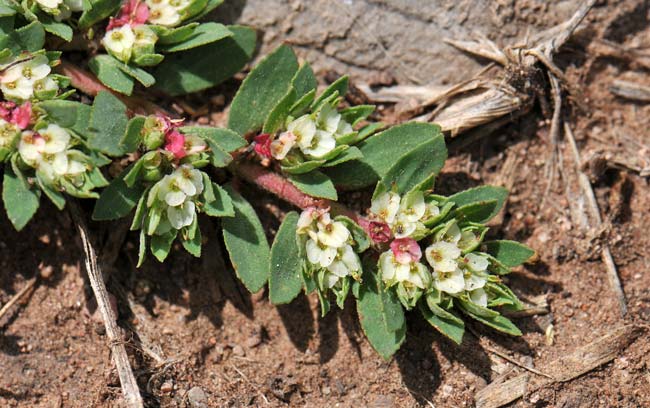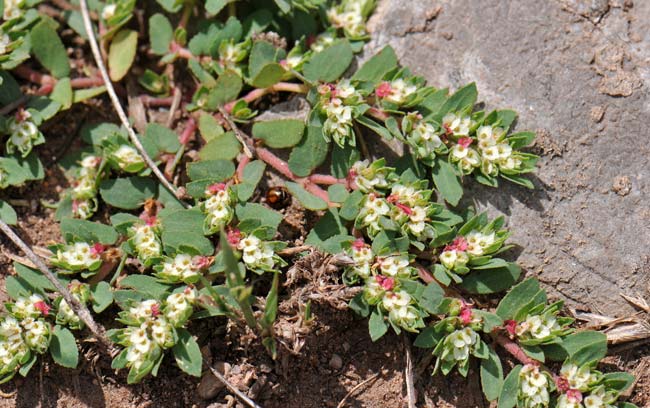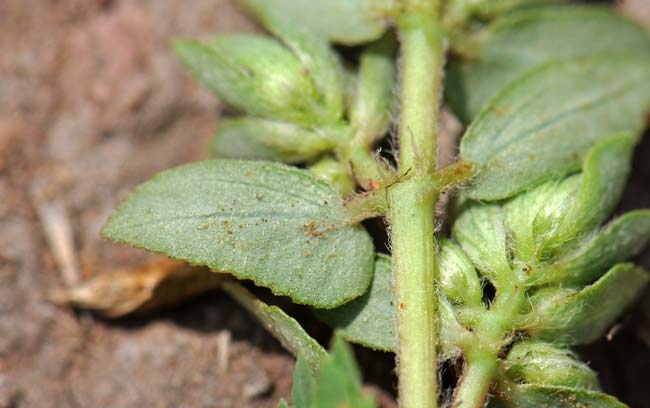Chamaesyce dioica, Royal Sandmat



Scientific Name: Chamaesyce dioica
Common Name: Royal Sandmat
Also Called:
Family: Euphorbiaceae, Spurge or Euphorbia Family
Synonyms: (Chamaesyce indivisa and Euphorbia indivisa)
Status: Native
Duration: Annual
Size: Low growing prostrate.
Growth Form: Forb/herb; prostrate
Leaves: Green; hairy pubescence at least abaxial, leaf shape variable; obovate or oblanceolate, margins with teeth near tips (apex), asymmetric at base, small teeth.
Flower Color: Cream to pink petaloid appendages; 2 appendages much larger than the others, inflorescence resembles a "flower", flowers appear clustered in axils, actual flowers small or inconspicuous, monecious, botanically the "flower" is a cyathium, fruit a capsule.
Flowering Season: August to October.
Elevation: 2,500 to 5,000 feet.
Habitat Preferences: Sandy, often rocky washes.
Recorded Range: Another rare Chamaesyce in the United States where it is native to Arizona, New Mexico and Texas. Largest populations of this species occur in southern Arizona. It is also native to northern Mexico.
North America & US County Distribution Map for Chamaesyce dioica.
U.S. Weed Information: No information available.
Invasive/Noxious Weed Information: No information available.
Wetland Indicator: No information available.
Threatened/Endangered Information: No information available.
Genus Information: Over 90 species in Chamaesyce in the United States, Canada and Mexico. World-wide over 440 species. Approximately 39 species in Arizona, statewide. Note: Taxonomists appear to be moving toward reclassification of Chamaesyce to Euphorbia, its former classification.
Comments: Royal Sandmat is not too difficult to identify with its cream or pinkish appendages where 2 are much larger than the others and the "flowers" are clustered in axils.
In Southwest Desert Flora also see: Chiricahua Mountain Sandmat, Chamaesyce florida, Whitemargin Sandmat, Chamaesyce albomarginata; Arizona Sandmat, Chamaesyce arizonica; Head Sandmat, Chamaesyce capitellata; Hyssopleaf Sandmat, Chamaesyce hyssopifolia; Red-gland Sandmat, Chamaesyce melanadenia; Carrizo Mountain Sandmat, Chamaesyce pediculifera; Threadstem Sandmat, Chamaesyce revoluta and Yuma Sandmat, Chamaesyce setiloba.

